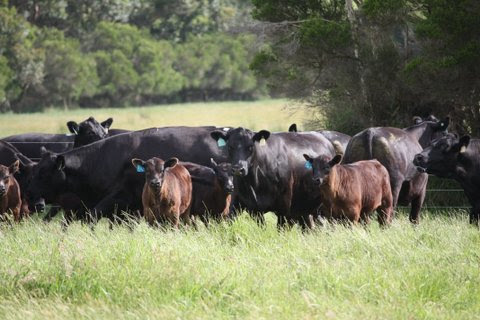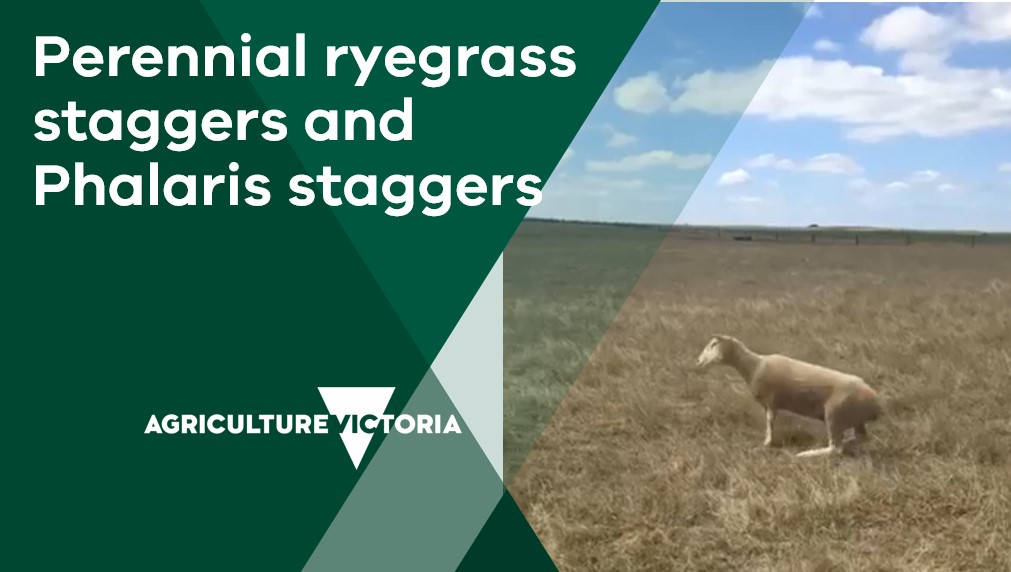Grass tetany – be prepared
Article printed April 26, 2024. For the latest version, please go to: https://feedinglivestock.vic.gov.au/2021/06/15/grass-tetany-be-prepared/
Grass tetany is caused by either a magnesium (Mg) deficiency or an interference with the absorption of Mg and results in high death rates in affected animals.
It may occur at any time but generally occurs over the winter months in south eastern Australia, with peaks during times of cold, wet and windy weather conditions. Grass tetany is most common in older cows (> six years), although very occasionally it can occur in younger cattle. Older cows in autumn and winter calving herds, especially overly fat and very thin are most susceptible to this metabolic disease.

When does it occur?
Grass tetany occurs when the Mg level in the blood falls below a critical level. Cattle hold Mg in their bones but can’t readily mobilise these stores. The animal constantly loses Mg in urine, faeces and milk; therefore it needs a daily intake of Mg.
The balance of Mg in cattle basically depends on the rate of absorption from the rumen and the rate of excretion of Mg, especially in the milk. A cow in peak lactation needs a constant source of Mg to replace the large amount lost from the body in milk. Grass tetany will occur when Mg losses in milk exceed the amount consumed in pasture, with the highest risk period occurring from calving through to the first few months of lactation.
Grass dominant pastures in late autumn and winter will have lower Mg and calcium concentrations and higher potassium levels, especially with very short pasture. Grazing cereal crops are generally high risk because they are inherently low in Mg. Pastures that are excessively high in potassium can inhibit the uptake of Mg by cows.
Grass tetany usually occurs when cattle graze these types of pastures after calving down. The amount of Mg present in the body fluids of fat cows is low compared to that of a normal cow. This is why grass tetany deaths in fat, older cows, is often associated with a check in grazing after calving. Any factor that disrupts grazing creates low intake and may trigger grass tetany in at-risk cattle.
Signs and symptoms
Very low levels of Mg in the brain fluid affect nerve impulses between the brain and muscles. This causes nervous signs and ultimately death.
The first sign of grass tetany is often dead cows in a paddock. You can usually see froth around the mouth and nose. The ground is rubbed where they have thrashed around before dying. Deaths usually occur in winter when the weather is overcast, cold, wet and windy.
In less severe cases, the cow will be obviously ill at ease, walk stiffly, be hypersensitive to touch and sound, urinate frequently, and may progress to the acute convulsive stage. This becomes more likely if the cow is put under any type of stress.
Treatment
Early treatment is critical to recovery and the chance of saving the animal. Therefore, it’s important to restore blood Mg levels rapidly.
Generally, in an animal that has gone down, a 4 in 1 mineral solution pouch (calcium and Mg solution, available from your local veterinarian or rural supplies store) is injected under the skin. It supplies the animal with vital Mg needed to stay alive once affected. After the cow has recovered from the initial episode, she should be given an oral treatment of Causmag® or Epsom salts to prevent a relapse.
Prevention
The aim of grass tetany control is to ensure that stock with high Mg requirements have an adequate intake and good absorption of Mg. Therefore, be prepared with recently calved cows if cold, wet and windy conditions continue or if you have animals in your herd that are high risk.
There are many options available for the control, and the time and money spent will depend on the risk of animals being affected.
Below are some management strategies to prevent and treat grass tetany:
- Increase the Mg intake to at-risk mobs of cows:
- Feed 60 grams/head/day Causmag® on hay during risk periods
- Note that after commencement of feeding, it takes two to three days before the stock are protected
- Protection ceases immediately after supplementation stops
- May be expensive in terms of labour and hay costs, as well as difficult if paddocks become too wet
- Still one of the most effective options
- Feed hay (also a source of calcium)
- In some cases, feeding hay alone may be all that is required to prevent grass tetany
- Match high risk cattle to low risk paddocks and control and manage feed availability through grazing management.
- Avoid stressful management procedures such as mustering or calf marking during times of high risk
- Have cows in good, but not overfat, body condition (fat score 2-3) at calving and ensure they don’t lose weight rapidly
- Provide lick blocks
- Commercial blocks are relatively expensive
- Cheaper option may be to make up your own lick block
- Seek advice from animal health advisor on home licks.
Grass tetany is a complex metabolic disease in cattle, as many factors can contribute to it. Good management is essential to prevent and manage grass tetany For more information contact your veterinarian or animal health advisor.
For more information contact your veterinarian or animal health advisor.
Author Contact Details:
Alison Desmond


